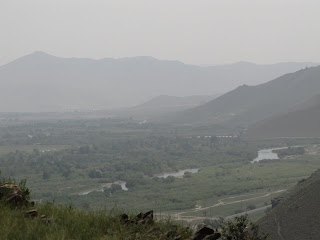 Ulaanbaatar dishes up a surprisingly wide array of nightlife. There is at least something for most tastes.
Ulaanbaatar dishes up a surprisingly wide array of nightlife. There is at least something for most tastes.Sophisticates
- Monet and Sky Lounge - located on the top floor of Central Tower (Louis Vuitton, Zegna, Armani and Boss on ground floor) this is 'the' place to hang out with the beautiful people of Mongolia. Kitten heels and sharp suits are the order of play. Astounding views.
- Veranda - again I enthuse about this place. The best place to enjoy a bottle of wine with friends.
- Crystal Lounge - modernist, trendy hang-out serving only cocktails; decent ones at that.
Drinkers
Ulaanbaatar has almost as many pubs as Edinburgh. Most are wee vodka dens; a must 
- Dublin - even deepest Mongolia has its own Irish bar. This is a better and more genuine offering than many other countries boast. Good beer, great atmosphere and a leg of lamb for a pound - bargain! Miners love this place.
- Dave's Place - a British pub that runs a pub quiz alongside decent football (if that's your thing). Nice outdoor patio.
- Brau Haus - to Germany and as you'd expect: loud, big beers, hearty food and live music. Not for a quiet night.
Clubbers
- Ismuss - weird weird weird. The multi-level club boasts a 7 metre high statue of Joseph Stalin! A throw back to Soviet-chic, worth a visit.
- Zouq - the first Egyptian themed club I've come across. Catwalk dance floor.
- Silence - late night trance music.










 The Steppe Inne is something of an institution in
The Steppe Inne is something of an institution in 







 ony, the games began. The wrestling competition was a pyramid wi
ony, the games began. The wrestling competition was a pyramid wi













